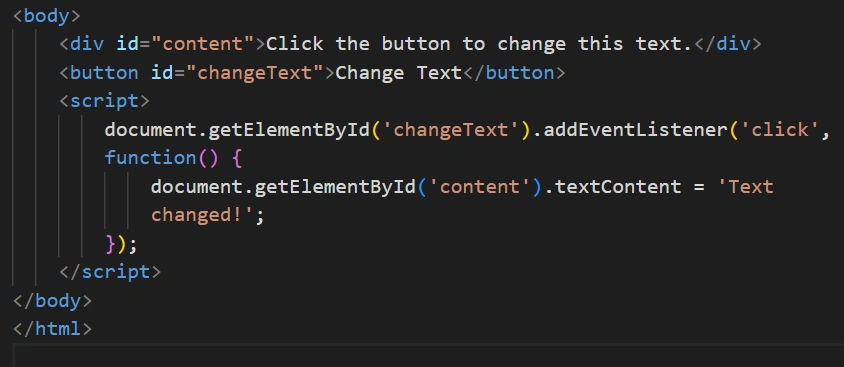What is JavaScript DOM Manipulation: JavaScript DOM manipulation is an essential concept for creating dynamic, interactive web pages. By understanding and leveraging the Document Object Model (DOM), developers can bring static HTML documents to life, making them responsive and user-friendly. Let’s dive into what JavaScript DOM manipulation entails and explore its practical applications.
Ever wondered how websites dynamically update their content or respond instantly to your clicks? The magic lies in JavaScript DOM manipulation. This powerful feature enables developers to interact with a webpage’s structure, content, and styling, allowing for real-time updates and a more engaging user experience. Let’s break down this concept step by step.
Understanding the DOM
At its core, the Document Object Model (DOM) is a programming interface that represents an HTML or XML document as a tree of nodes. Each part of the document—elements, attributes, or text—becomes a node in this structure. Here’s how it works:
Tree Structure
- The DOM represents a document as a tree-like hierarchy.
- Parent nodes have child nodes, representing nested elements.
Node Types
- Document Node: Represents the entire document.
- Element Nodes: Represent tags like
<div>or<p> - Text Nodes: Represent the text inside elements.
- Attribute Nodes: Represent attributes like
classorid.
| How to Generate HTML Form Design Examples with Code(5+) |
| How to Create Basic HTML Page Code(New style) |
Why Use JavaScript DOM Manipulation?
JavaScript DOM manipulation offers endless possibilities to create dynamic and interactive web pages. Here’s why it’s indispensable:
Dynamic Content Updates
With DOM manipulation, you can modify a webpage’s content without reloading the page. For example, updating a paragraph’s text based on user input.
Enhanced User Interactivity
Create interactive features like button clicks, form submissions, or hover effects. A common example is highlighting a button when hovered.
Real-Time Data Rendering
Add or remove elements dynamically, such as displaying items in a shopping cart.
Improved User Experience
Features like animations and view toggling make the webpage more engaging.
Basics of DOM Manipulation
JavaScript interacts with the DOM using the document object. This object provides methods and properties to access and manipulate elements. Here are some essential methods:
Common Methods
document.getElementById('id'):Access an element by its ID.document.querySelector('.class'):Select an element using a CSS selector.document.createElement('tag'):Create a new element.
Modifying DOM Elements
Changing Content
Use the innerHTML or textContent property to update an element’s content.
document.getElementById('example').innerHTML = 'Hello, World!';
Adding and Removing Elements
Dynamically add or remove elements using methods like appendChild or removeChild.
Updating Attributes
Change attributes using setAttribute or classList.
document.querySelector('button').setAttribute('disabled', true);
Handling Events
Events allow you to respond to user actions. For example, attaching a click event listener:
document.getElementById('btn').addEventListener('click', function() {
alert('Button clicked!');
});
A Practical Code Example
Here’s a practical example of DOM manipulation:
<!DOCTYPE html>
<html lang="en">
<head>
<title>DOM Manipulation</title>
</head>
<body>
<div id="content">Click the button to change this text.</div>
<button id="changeText">Change Text</button>
<script>
document.getElementById('changeText').addEventListener('click', function() {
document.getElementById('content').textContent = 'Text changed!';
});
</script>
</body>
</html>
Common Mistakes to Avoid
- Overloading the DOM with too many elements.
- Inefficient query selection (e.g., multiple
getElementByIdcalls).
Conclusion
Mastering JavaScript DOM manipulation is crucial for developing responsive and interactive web applications. By understanding the DOM’s structure and learning how to manipulate it efficiently, you can create dynamic, user-friendly experiences.
FAQs
What is JavaScript DOM manipulation?
It’s the process of dynamically modifying a webpage’s content, structure, and styles using JavaScript.
Why is DOM manipulation important?
It enhances user interactivity, enables real-time updates, and improves the overall user experience.
What tools can help with DOM manipulation?
Popular tools include jQuery, vanilla JavaScript, and modern frameworks like React.
How do I optimize DOM manipulation?
Batch updates, use documentFragment, and avoid unnecessary DOM queries.
Is DOM manipulation secure?
Ensure security by sanitizing user inputs and avoiding direct innerHTML updates.








